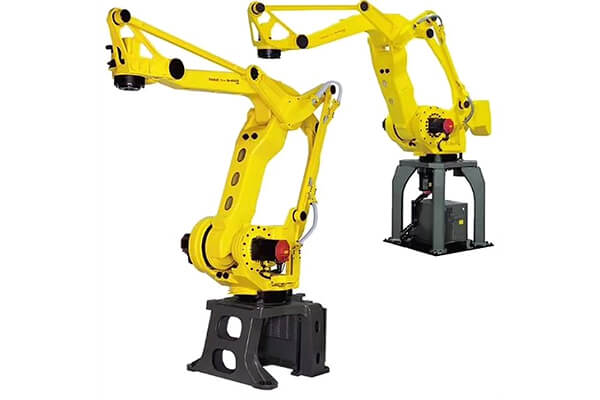Material Handling Robots Cut Costs And Improve Efficiency.
Material handling robots cut costs because they do the kind of arduous work humans aren't suited for. They'll lift massive payloads — the largest Fanuc robot can tote more than 2,866 pounds (1300kg) at one time — and place them to within a few thousandths of an inch all day and all night. They thrive in hot, noisy and dangerous places like foundries, forges and strip mills, never taking a break, vacation or sick leave.
The need for sick leave is a common result of moving cases and packages by hand. In fact, lifting is a leading cause of workplace injuries, and it costs employers millions each year. Automating material handling tasks with robots creates a better environment for workers and protects employers against compensation claims
SPECIFICATIONS FOR AUTOMATIC ROBOT PALLETIZER | |||
Robot arm | Japanese brand robot | Fanuc | Kawasaki |
German brand robot | KUKA | ||
Switzerland brand robot | ABB | ||
Main performance parameters | Speed capacity | 8s per cycle | Adjust according to products and arrangement per layer |
Weight | About 8000kg | ||
Applicable product | Cartons, cases, bags, pouch bags | Containers, bottles, cans, buckets etc | |
Power and air requirements | Compressed air | 7bar | |
Electric power | 17-25 Kw | ||
Voltage | 380v | 3 phases | |
PLC | Siemens |
Frequency converter | Danfoss |
Photoelectric sensor | SICK |
Servo motor | Panasonic |
Pneumatic component | SMC |
Low-voltage apparatus | Schneider |
Touch screen | Schneider/Siemens |
Driving motor | SEW |


